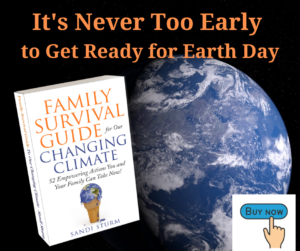While searching for holiday markets, I ran across an intriguing exhibit at the Utah Museum of Fine Arts (UMFA) in Salt Lake City called AIR. Last night they had a particular program wrapped around the exhibition that tempted me to venture out across the valley.
Ironically, or coincidently, the air was so bad in the valley yesterday that you could not see the mountains that flank Salt Lake City at every angle. The weather announcers call it “hazy,” but I know what it is.
Air should not put a taste in my mouth like the one you get driving by the sewer treatment plant.
But I am guilty, too, of contributing to the haze. I made the 40-minute trip to the museum alone in my tiny little car.
Air quality is a big issue here in Salt Lake City. Yet, bulldozers continue to line up to build new mega-housing developments like they are in line for their chicken sandwich fix. One is so big that it is ten times larger than many towns I have lived in.
Poor air quality has been a significant health concern here for decades. According to the State of the Air report in 2021, the valley (including Salt Lake City and Orem) ranked 8th out of 228 metropolitan areas for the worst ozone pollution.
Air pollution is one issue rivaled only by the shrinking water supply.
But hey, there appears to be a need to build those 2,000+ square feet homes filled with “stuff.” It’s the American way.
[Pull me back in…]
When I found the UMFA AIR exhibit on the website, it was said to “make the invisible visible.” It consisted of contemporary art from environmental, social justice, and cultural perspectives.
Air is visible on many occasions, but social injustices and cultural losses are not always noticed.
Last night, the museum had a remarkable Sight and Sound: Breath of Air program. A small group of us met at 6:00 PM for a guided tour followed by a performance by Runnin’ FL’UTES.
It was just what I needed.
Three of the exhibits caught my attention.
AIR: Virginia Catherall Salt Lake Air Quality Scarf 2020
A wool scarf was spread out under glass about four feet long. During 2020, artist Virginia Catherall knitted one row per day using the color used by the U.S. Environmental Protection Agency’s Air Quality Index. Green, yellow, orange, and red. Green is good, and red is unhealthy.
What caught our eye was the long section of green that corresponded to the shutdown period that began in early March. However, the oranges and reds began to appear again once restrictions were lifted.
AIR: Kim Abele World Leaders in Smog
You see two rows of images on plates at Kim Abeles’ World Leaders in Smog display. It might remind you of the commemorative plates our grandparents may have collected. But our guide shared the bigger story.
Each plate has a world leader stenciled in the middle – ten in total. Each leader presented at a climate summit during the years 2011 and 2018. Quotes by those leaders were also stenciled onto the plates.
Stencils were put onto the plates and then placed on the artist’s rooftop in Los Angeles for as little as four days or up to a month. The plates were not painted. The dark around the stencil images is particulate matter that fell onto the plates while sitting on the rooftop.
We breathe similar air every day.
Air Ink
It is customary for museums to put messages on walls using vinyl lettering. However, the curators of AIR realized that putting vinyl, a petroleum product, onto the walls of this exhibit was a wrong choice.
We were introduced to Air Ink, an ink made from particulate matter captured from sources such as tailpipes. All the lettering in the exhibit was handwritten using Air-Ink markers. AIR-INC claims that 30ml of the ink negates 45 minutes of air pollution.
After walking through the rest of the exhibit, I found a nice corner that overlooked the space where the orchestra was playing. It also had a window where I saw the snow coming down. Beautiful until I remembered I had a 40-minute drive home and had not driven in snow for ten years. In my tiny car!
I made it home, and today the sun is so bright, reflecting off the fully visible mountains. But for how long? I better get outside and breathe some fresh air while I can.









